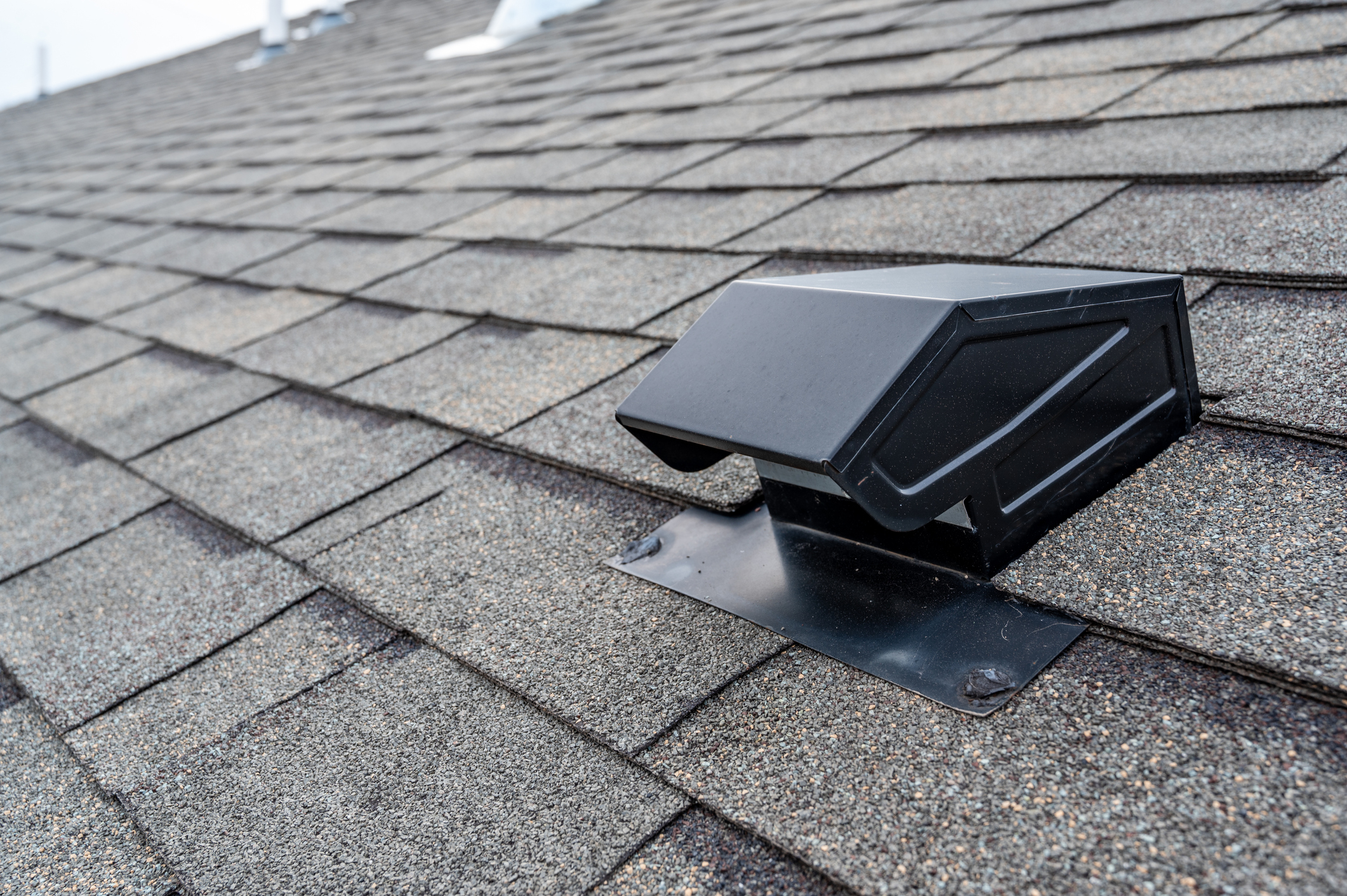Roof Report
Roof Ventilation: The Unsung Hero of a Healthy Roof and Home

It’s safe to say most homeowners worry about the health of their roof. At the end of the day, nothing is more important more than a strong, sturdy structure to protect our homes and everything (and everyone) we love inside of it. Fewer of us worry about roofing ventilation. However, more of us would give a second thought with a little bit of knowledge about ventilation’s role in a healthy roof and home.
On average, Long Island gets about seven to nine days of rain or snow per month. Hot, sunny, and somewhat humid summers alternate between cold, snowy winters, challenging your roofing and ventilation systems with every drop of water and ray of sunshine that hits your house.
From the 82°F days in July to the 17°F nights in January, alternating hot and cold temperatures can damage everything from asphalt shingles to flashing to drainage. If you own a home on Long Island, you deserve to know how roof ventilation can help protect your home and family.
An art and a science
Ventilation is a hidden component that can shorten or lengthen the lifespan of your Long Island roof. Unlike the more standard, universal methods of installing asphalt shingles, ventilation is both an art and a science. Two different contractors could build a roof the same way—but no two contractors take the same approach to ventilation. A contractor that only installs roofs could get ventilation wrong.
Smart contractors know a roof is part of a whole home’s system where the inside counts just as much as the outside. Every roof needs good ventilation to perform as promised. Most people—and even some contractors—overlook this simple fact.
More ventilation isn’t always better—and you can have too much of a good thing. Vents are holes, which create weak points in your roof. An expert knows how to install the right number of vents the right way to prevent water pooling, leaking, and drainage problems. It’s about more than just X number of vents per square foot—it’s about tailoring ventilation to your unique home.
More than just energy savings
Most homeowners think roof and attic ventilation is about saving money on heating and cooling costs—which is true.
New York already has the fifth most expensive utilities in the country with an average cost of $174 per month for electricity, $103 for natural gas, $61 for internet, and $40 for water. The Long Island cost of living is one of the highest in the country—and utilities play a big role. However, other factors—like attic insulation—play a larger role in a home’s energy efficiency than ventilation.
The real job of good roof ventilation is preventative maintenance for the whole home.
Asphalt shingles installed on a poorly ventilated roof reach higher temperatures than on ventilated roofs, reducing a roof’s lifespan by up to 10%. A new roof with bad ventilation can trap moisture in the attic—exposing your family to mold, allergies, and other air problems—and even void material warranties, exposing you to unexpected and potentially expensive risks down the road. Poor indoor air quality can impact the safety of your family.
Moisture and overheating
Attic moisture builds up not just from weather and outside humidity but also from cooking, showering, washing the dishes, and any type of water usage. Things like leaky exhaust vents can accumulate evaporated water and moisture in the attic and damage a roof.
Newer homes pose an even greater threat. Extra insulation between walls and floors and modern, energy efficient windows built to keep hot or cold air inside create a trade-off between better energy use and breathability.
Without good ventilation, the summer sun can cause an unhealthy buildup of excess heat up to 140°F even on a moderate 90°F day. Overheating combined with moisture can crack shingles and damage roof decking. During the winter, good ventilation helps maintain a cool roofing system, mixing cool air from outside with attic air and melting less snow on the roof.
It’s about ventilation—not perfection.
A healthy roof and attic work together to protect your Long Island home. In a perfect world, a roof would protect the outside, creating a surface to roll off every raindrop without a hitch. Perfect insulation—with no air gaps, holes, or inconsistencies—would protect the inside. We would never see moisture from weather on the underside of our roofs or inside our homes. However, roofs and attics are imperfect.
From HVAC units in the attic to leaky ductwork to air gaps around registers, weak spots put your home at risk of moisture rising into the attic. An attic used as storage, filled with plastic tubs of Christmas decorations, creates more surface area for condensation. Boxes sitting on top of insulation can press down against the ceiling.
Things like can lights, speakers, and bathroom exhaust fans put holes—and air gaps—in ceilings. Pull-down ladders and access points are essentially just oversized holes. No attic is perfect—but that’s okay. The key is good ventilation—sized to your home’s unique build, capacity, and lifestyle—working together with the condition of your attic.
Condensation and ice dams
New York averages 50 to 75% humidity in the summer with an average rainfall of 47.4 inches per year. Both rainfall and humidity can settle condensation on exposed lumber and insulation, among other potential problems.
When hot air from inside the home rises into a non-temperature-controlled attic, moisture settles on cool spots like plumbing venting. Moisture problems are worse in the winter when hot air rises into a cool attic with nowhere to escape. In the summer, temperature drops and rainstorms can create wet, mold-friendly environments.
Remember that holes in an attic pose a greater threat to your utility bills than good ventilation. The goal is to regulate attic moisture and prevent condensation and mold.
The Long Island winter season accumulates between 3 and 10 inches of snow per month with the occasional 20-plus inch storm following a coastal nor’easter. After a snowstorm, built-up snow and ice on the roof should melt from the sun equally near the base and top of the roof.
A good roof pitch with proper drainage allows water to slide off. Poor ventilation creates extra heat near the top of the roof when hot air rises into the attic, causing snow and ice to melt faster at the top, leaving the unmelted portion to “dam” up at the bottom.
A roof unable to drain leaves unmelted ice and snow trapped, which can push water up underneath the shingles or into the roof seams. The problem can go unnoticed since it’s harder to spot than a leak caused by fallen tree branch.
Top signs of poor roof ventilation
- Icicles and ice dams. Snow piled up on a roof and large ice dams are signature signs of poor roof ventilation.
- Broken down air conditioner. Many homeowners overlook the connection between A/C units and roof problems. Poor ventilation can trap hot summer air inside, making your air conditioner work harder to cool your house. Any type of stress on an HVAC system can shorter its lifespan. Think twice about ventilation if your A/C unit breaks more than once.
- Hot or cold areas inside your home. Noticeable changes in temperatures up and down stairs or from room to room could indicate poor ventilation. Extremely hot or cold areas inside your home could mean your heating, cooling, and ventilation systems can’t keep up with the demand.
- Roof leaks, mold, and mildew. Homeowners who ignore the early warning signs risk serious problems to their homes and health. Exposure to water damage over time can spring roof leaks and drip excess water into your home, which can grow mold, mildew, and other health hazards.
- Unwanted pests inside your home. Ventilation problems and damage to your roof, siding, gutters, and home exterior help critters find a way inside. From tiny insects crawling through cracks and crevices to squirrels and rodents burrowing a path through the walls, any kind of pest infestation indicates a potential roof ventilation problem.
The triple threat: new roof, ventilation, and attic upgrade
The best time to assess your home’s ventilation is during a new roof installation. Find a contractor to assess the best type and amount of ventilation for your unique home. (A word of advice: watch out for low bids. A bid 20 to 50% less than the others usually means the contractor plans to skip roof ventilation.)
A new roof installation is also a good time to upgrade your attic. Attic insulation and air gaps play huge roles in a healthy roof and lower utility bills. It’s not the most glamorous home improvement project—but the instant savings and long-term comfort are well worth the investment.
Good ventilation can extend the life of your roof, protect your investment, and lower your utility costs, allowing a smooth exchange of fresh outdoor air with stale inside air. A balanced system—mixing both intake and exhaust—vents in all the right places to allow air to flow freely, encouraging stable temperatures and humidity in your attic and home from season to season.
Royal treatment for you and your home
Ready to upgrade your ventilation system and roof? At King Quality, our decades on the job and exclusive partnerships mean leading manufacturers trust us to install only the highest quality products. And our affordable financing makes your dream of a unique, quality-driven home a reality.
We put lifetime warranties, certified and award-winning installers, and low monthly payments behind every project to turn homes into castles. Call us today at 631-573-0642 to schedule a free consultation—and discover royal treatment for you and your home.









